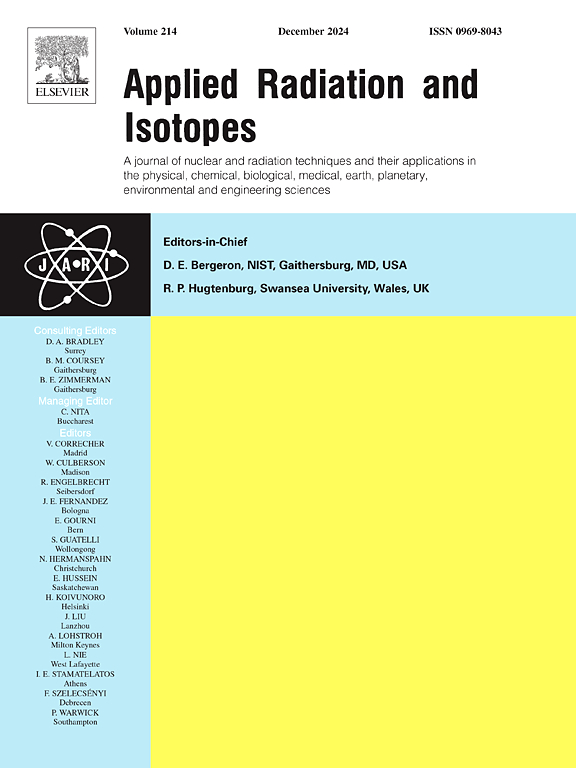Experimental Study on a Method for Determination of 210Po Activity in Soil
IF 1.6
3区 工程技术
Q3 CHEMISTRY, INORGANIC & NUCLEAR
引用次数: 0
Abstract
This paper is based on detailed studies by predecessors on the parameters of self-deposition reaction reagents, analyzes multiple extraction and multi - copper - sheet extraction experiments using the gross alpha count method. It was determined that 60°C is the most suitable temperature for auto-precipitation reaction experiments by the paper. By performing multiple extractions, the amount of 210Po extracted from soil samples can be increased. Additionally, by controlling the mass loss of the sample solution during the extraction process, the extraction efficiency can also be improved. Meanwhile, the linear relationship between uranium ore powders of different concentrations and the alpha net count rate was investigated. It was revealed that outlier points exist in the measurement results of soil samples containing trace amounts of 210Po, with a relatively low linear correlation.Moreover, the extraction results of a single copper sheet are prone to obvious statistical fluctuations.These problems are effectively solved by the multi-copper-sheet extraction method, thereby reducing measurement errors.Furthermore, the effectiveness of these two methods was verified using field-collected soil samples.It was found that multiple extractions and the multi-copper-sheet method could further enhance the practical applicability and accuracy of 210Po measurement methods in soil.
土壤中210 - po活性测定方法的实验研究
本文在前人对自沉积反应试剂参数进行详细研究的基础上,利用总α计数法对多次萃取和多次铜片萃取实验进行了分析。本文确定了60℃是进行自沉淀反应实验的最适宜温度。通过多次提取,可以增加土壤样品中210Po的提取量。另外,通过控制萃取过程中样品溶液的质量损失,也可以提高萃取效率。同时,研究了不同浓度的铀矿粉与α净计数率之间的线性关系。结果表明,痕量210Po土壤样品的测量结果存在异常点,线性相关性较低。而且,单片铜的提取结果容易出现明显的统计波动。多铜片提取法有效地解决了这些问题,从而减小了测量误差。此外,通过田间土壤样品验证了这两种方法的有效性。发现多次提取和多铜片法可进一步提高土壤中210Po测定方法的实用性和准确性。
本文章由计算机程序翻译,如有差异,请以英文原文为准。
求助全文
约1分钟内获得全文
求助全文
来源期刊

Applied Radiation and Isotopes
工程技术-核科学技术
CiteScore
3.00
自引率
12.50%
发文量
406
审稿时长
13.5 months
期刊介绍:
Applied Radiation and Isotopes provides a high quality medium for the publication of substantial, original and scientific and technological papers on the development and peaceful application of nuclear, radiation and radionuclide techniques in chemistry, physics, biochemistry, biology, medicine, security, engineering and in the earth, planetary and environmental sciences, all including dosimetry. Nuclear techniques are defined in the broadest sense and both experimental and theoretical papers are welcome. They include the development and use of α- and β-particles, X-rays and γ-rays, neutrons and other nuclear particles and radiations from all sources, including radionuclides, synchrotron sources, cyclotrons and reactors and from the natural environment.
The journal aims to publish papers with significance to an international audience, containing substantial novelty and scientific impact. The Editors reserve the rights to reject, with or without external review, papers that do not meet these criteria.
Papers dealing with radiation processing, i.e., where radiation is used to bring about a biological, chemical or physical change in a material, should be directed to our sister journal Radiation Physics and Chemistry.
 求助内容:
求助内容: 应助结果提醒方式:
应助结果提醒方式:


